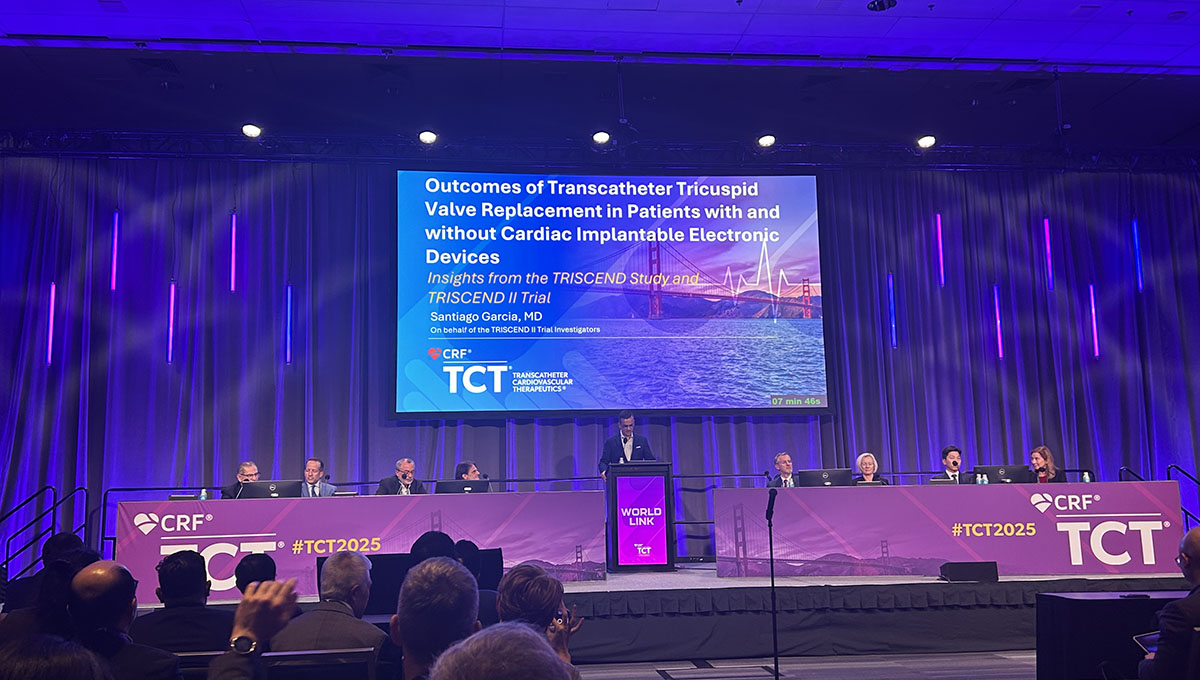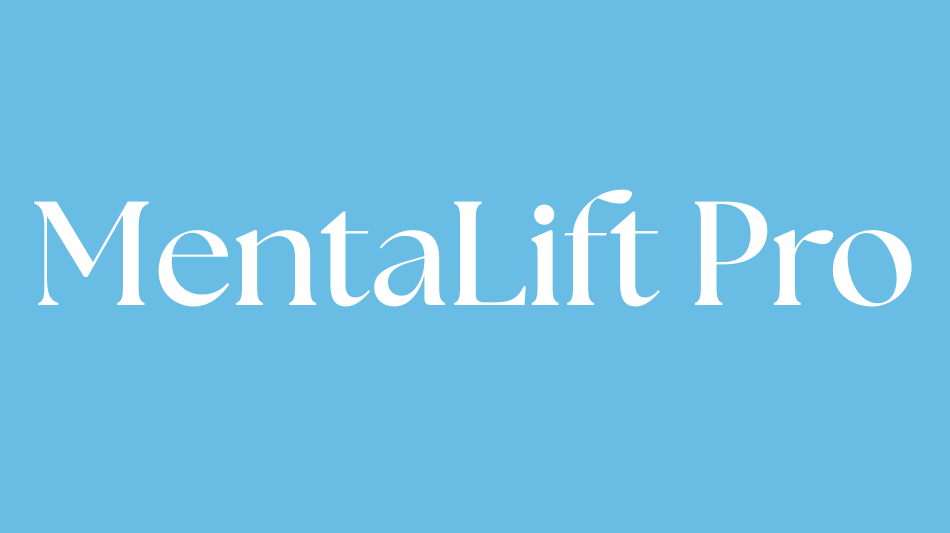Japan’s new HTV-X cargo spacecraft launched on its first-ever mission to the International Space Station on Saturday (Oct. 25).
Blog
-

Valuation in Focus After AI Data Center Deals and Google-Backed Bond Plans
Cipher Mining (CIFR) surged this week as investor enthusiasm around Oracle’s $38 billion data center expansion spilled over into the AI and crypto infrastructure sector. The company is now seeking additional capital through a Google-backed bond deal, a move that underscores its ambitions in AI data centers.
See our latest analysis for Cipher Mining.
Shares of Cipher Mining have been on a tear, notching a 327.74% year-to-date share price return thanks to surging interest in AI infrastructure and several headline-grabbing deals. Momentum is clearly building, with a one-month share price return of 46.11% and Friday’s standout 19.73% jump, even as recent volatility in crypto pushed some peers lower. With a 12-month total shareholder return of 278.39% and a 3-year total return well above 1,600%, both short- and long-term performance underscore just how hot sentiment has become for companies straddling the AI and crypto sectors.
If this surge in AI and crypto infrastructure piques your interest, the next step is to discover See the full list for free.
With shares soaring and bullish headlines fueling excitement, the key question remains: does Cipher Mining still offer room for upside, or is its future growth already fully reflected in today’s prices?
With Cipher Mining recently closing at $20.66, the most popular narrative sees the fair value at $16.88. This suggests the price is running ahead of fundamentals. Here’s what is driving the story at the center of the bullish debate.
“Industry-wide demand for large-scale, flexible, and energy-rich data center sites, driven by accelerating institutional and mainstream adoption of digital assets and AI, aligns with Cipher’s strategy to develop infrastructure that can quickly pivot between Bitcoin mining and high-performance computing (HPC), creating upside potential for both revenue diversification and earnings stability.”
Read the complete narrative.
Want to know what justifies this premium price tag? The narrative is built around extreme revenue acceleration, ambitious shifts into new technologies, and margin expansion assumptions rarely seen in crypto infrastructure. What kind of bold growth math is working behind the scenes here? Click through to uncover the projections powering this jaw-dropping valuation.
Result: Fair Value of $16.88 (OVERVALUED)
Have a read of the narrative in full and understand what’s behind the forecasts.
However, if Bitcoin prices remain low for an extended period, or if there are unexpected cost overruns related to rapid expansion, Cipher Mining’s current growth narrative and outlook could be quickly dampened.
Continue Reading
-

Assessing Valuation as AI Innovation Drives New Interest in Biotech
Schrödinger (SDGR) has been featured as a key player in the recent industry spotlight on artificial intelligence innovation within biotechnology. The focus is on its work in AI-powered drug discovery and its support for clinical trials.
See our latest analysis for Schrödinger.
Schrödinger’s share price has climbed 18.2% over the last month, with momentum building amid a year-to-date rise of 10.4%. Over the past 12 months, total shareholder return hit 27.4%, highlighting renewed optimism after years of lagging performance.
Given the surge in biotech and AI-powered innovation, it could be the perfect moment to expand your research into other healthcare pioneers. See the full list for free with See the full list for free.
With shares trading nearly 20 percent below analyst price targets and impressive growth in both revenue and AI innovation, is Schrödinger offering a rare value opportunity, or is the market already accounting for its future ambitions?
Schrödinger’s most popular narrative puts its fair value at $27.30, notably higher than the last close at $22.52, suggesting the crowd still sees considerable upside. With impressive revenue growth and industry-leading technology, the long-term outlook appears optimistic, provided the bullish assumptions turn out to be true.
Expansion of large-scale strategic partnerships and collaborations (e.g., with Novartis, Lilly, and Otsuka), combined with consistent 100% retention among largest customers and robust renewal discussions, increase near and long-term earnings visibility and reduce churn risk, stabilizing future earnings and free cash flow.
Read the complete narrative.
What’s fueling such a premium price target? The most intriguing part is that this narrative leans on ambitious projections for recurring revenue, future software demand, and strong earnings visibility. Curious which numbers tip the scales? Dive into the full breakdown to see how these bold financial levers could drive exceptional returns.
Result: Fair Value of $27.30 (UNDERVALUED)
Have a read of the narrative in full and understand what’s behind the forecasts.
However, a slowdown in new customer growth or pressure on software margins could quickly change this optimistic outlook for Schrödinger’s future earnings.
Find out about the key risks to this Schrödinger narrative.
Looking at the price-to-sales ratio, Schrödinger trades at about 7x, which is more than double the US Healthcare Services industry average of 3.2x and far above peer averages at 2.6x. The estimated fair ratio stands at just 3x. This stark gap suggests that, by this metric, the stock carries valuation risk if the market pulls back to more conservative benchmarks. Could momentum alone keep Schrödinger’s valuation on a premium path, or does this set up the potential for a reset?
Continue Reading
-

Assessing Undervaluation and Growth Potential After Recent Share Price Momentum
Zeta Global Holdings (ZETA) shares have moved very little in the past day. However, longer-term investors might be curious about recent performance trends and what they signal for the next chapter.
See our latest analysis for Zeta Global Holdings.
While Zeta Global Holdings’ shares slipped over the past month, the company’s 90-day share price return of 17% hints at renewed momentum building recently. That said, the total shareholder return over the past year is still down nearly 30%, so investors have reasons to weigh both the fresh optimism and the longer-term challenges.
If you’re inspired to look beyond the latest rebound, now is an ideal moment to broaden your search and discover fast growing stocks with high insider ownership
With shares trading at a sizable discount to analyst price targets and recent financials showing strong revenue growth, the question remains: is Zeta Global Holdings undervalued at current levels, or has the market already factored in its future potential?
With a fair value estimate of $28.27 per share versus the last close of $18.79, the current consensus narrative points to notable upside. This positions Zeta Global Holdings as a stock with a sizable gap between what the market is pricing in and what this narrative expects, based on forward earnings growth and profitability improvements.
“Zeta is benefiting from rapid enterprise adoption of AI-powered marketing automation and omnichannel personalization, which is driving large, multiuse case deployments (like OneZeta) and fueling double-digit revenue growth along with expanded customer lifetime value.
Read the complete narrative.
Want to know what’s fueling that powerful upside? This narrative hinges on a handful of ambitious sales targets, sharply improving profits, and a future earnings multiple well above industry norms. Wondering how bullish the consensus gets with these forecasts? Dive deeper to see which bold growth projections make up the heart of this valuation.
Result: Fair Value of $28.27 (UNDERVALUED)
Have a read of the narrative in full and understand what’s behind the forecasts.
However, tightening data privacy regulations or high ongoing losses could present challenges for Zeta Global’s ability to fulfill these optimistic projections.
Continue Reading
-

TTVR Remains Safe, Effective in Presence of CIED Leads
The rate of death or HF hospitalization was not influenced by the presence of leads after accounting for comorbidity burden.
SAN FRANCISCO, CA—The need for an implantable cardiac device before or after transcatheter tricuspid valve replacement (TTVR) does not appear to have a big impact on clinical outcomes, at least through the first year, according to an analysis of the TRISCEND and TRISCEND II studies.
After accounting for baseline differences between groups, patients who had a preexisting cardiac implantable electronic device (CIED) before TTVR or who required a new one after the procedure did not have a higher rate of all-cause death or hospitalization for heart failure (HF) at 1 year compared with those who didn’t need a device, Santiago Garcia, MD (The Christ Hospital, Cincinnati, OH), reported here during the WorldLink Forum at TCT 2025.
Moreover, CIEDs did not have an impact on reductions in the severity of tricuspid regurgitation (TR) with the procedure or measures of health status and function.
Lead discussant Kashish Goel, MD (Vanderbilt University Medical Center, Nashville, TN), emphasized the importance of showing no difference in hard outcomes, procedural efficacy in reducing TR, or health status changes across the groups. In addition, there was a low rate of lead malfunction, including no fatal cases, after TTVR.
What to do with CIEDs in the context of TTVR—including whether to extract the leads or “jail” them is a hot topic, Goel said, noting that about one-third of patients have preexisting leads at the time of the procedure.
“We should take a balanced approach in terms of what we’re going to do for these patients and not just say [that] jailing in everybody is okay,” he said.
Few Lead-Related Problems
With the emergence of transcatheter interventions for symptomatic severe TR, the interaction between TR and CIED leads that go through the tricuspid valve has gained more attention. Operators must decide whether to remove the leads or “jail” them—crushing them between the device and the native valve annulus—when performing TTVR. Jailing leads potentially damages them and could cause them to stop working properly.
In the current analysis, Garcia and his colleagues explored the safety and efficacy of TTVR using the Evoque system (Edwards Lifesciences) in patients with symptomatic severe TR with or without CIED leads using data from the single-arm TRISCEND study of patients with at least moderate-severity symptomatic TR and the randomized TRISCEND II trial of patients with severe or greater symptomatic regurgitation.
This analysis included 176 patients from TRISCEND and 259 from TRISCEND II who both underwent TTVR with the Evoque system and received optimal medical therapy. Mean patient age was nearly 80 years, and most participants (73%) were women. Slightly more than half did not require a CIED, 34.9% had a CIED in place before the procedure, and 12.6% needed a new CIED after the intervention.
At baseline, those with a preexisting CIED had a significantly higher EuroSCORE II and a lower LVEF compared with the other two groups, along with a higher prevalence of ischemic heart disease reflected by the nearly 20% rate of prior CABG. There were no significant differences across the three groups in the number of HF hospitalizations in the past year, median Kansas City Cardiomyopathy Questionnaire (KCCQ) overall summary score, or 6-minute walk distance. Echocardiographic measures of ventricular function and TR severity were similar across groups. Roughly half of patients had massive or torrential TR, and half had moderate or severe TR.
The researchers assessed outcomes in a 30-day landmark analysis to account for the timing of CIED implantation after TTVR. Before adjustment, the 1-year rate of all-cause death or HF hospitalization was higher in the patients with a preexisting CIED at the time of TTVR (25.4%) than in those who received a CIED after the procedure (15.9%) and those who did not require a CIED (15.0%).
However, after adjustment for potential confounders, which included sex, age, prior CABG, and right and left ventricular function, neither of the CIED groups had a higher risk of the composite outcome compared with the patients without a device (P = NS for both). Garcia said that indicates that the higher unadjusted rates observed in patients with preexisting CIED leads could be related to a higher burden of comorbidities at baseline—in particular, a high rate of ischemic heart disease and lower LVEF.
The efficacy of the procedure was similar across groups, with no significant differences in the proportion of patients who had a TR reduction by at least 2 grades (about 98% overall) and who achieved a TR grade of moderate or less (nearly 100% overall). There were similar proportions of patients who improved by at least one NYHA class and who had a gain in their 6-minute walk distance of at least 30 meters. Mean KCCQ overall summary score was about 73 points.
Lead-related problems among the 152 patients with a preexisting CIED were infrequent, occurring in 10 patients (6%). In six cases, the issue was corrected with placement of a new lead or repositioning of the existing lead. There were two cases addressed by a change in device programming and two involving medical management or no intervention.
The findings should be interpreted in light of some limitations, Garcia said. The investigators excluded patients with pacemaker dependency who did not have an alternative pacing option and those with an RV pacing lead placed within 90 days of the procedure. In addition, events that occurred prior to randomization, such as CIED lead extraction, were not captured and the analyses did not examine periprocedural events occurring in the first 30 days.
Moreover, there was a lack of longer-term data, which will be needed to better understand the potential risks of jailing leads during TTVR, Garcia said.
When considering the approach to these patients, it’s important to consider patient factors like age, pacemaker dependence, infection risk, and the contribution of lead placement to TR, as well as anatomical factors like slack in the lead and lead location, Goel indicated.
In addition, he said, “the expertise of the electrophysiologist in the practice will be important to make sure we have a risk-benefit analysis of what’s the best strategy for that patient.” And finally, longer-term follow-up beyond 1 to 2 years is critical to determine whether jailing CIED leads during TTVR will be safe for patients, Goel said.
Continue Reading
-

MentaLift Pro Launches Consumer Education Initiative on
Boston, Oct. 25, 2025 (GLOBE NEWSWIRE) — Disclaimer: This article is for informational purposes only. It is not medical advice. Always consult a qualified healthcare professional before using any supplement, especially if you take medications or have health conditions. Results vary by individual. Statements about MentaLift Pro have not been evaluated by the FDA. This product is not intended to diagnose, treat, cure, or prevent any disease. Affiliate links may be included. Purchases through these links may earn a commission at no additional cost to you.
MentaLift Pro, a cognitive health supplement manufacturer, announced today the launch of a comprehensive consumer education initiative focused on natural ingredients used in brain health formulations. The initiative responds to growing consumer interest in cognitive supplements and widespread confusion about ingredient efficacy, appropriate dosages, and realistic expectations for natural supplementation.
The educational program provides detailed analysis of botanical extracts and nutrients commonly used in cognitive health products, including peer-reviewed research findings, mechanism of action information, and safety considerations. The company aims to help consumers make informed decisions when evaluating cognitive supplement options in an increasingly crowded marketplace.
“The cognitive supplement market has grown substantially, but consumer education has not kept pace,” said the company in its announcement. “Adults seeking brain health support often lack access to clear, research-based information about ingredients, appropriate usage timelines, and how to evaluate product quality. This initiative addresses that gap.”
Learn more about cognitive health ingredient research at mentaliftpro.com
Growing Cognitive Health Supplement Market Creates Information Need
The dietary supplement industry has experienced significant growth in the cognitive health category over the past five years. Market analysts estimate hundreds of brain health products are currently available to U.S. consumers, creating challenges for individuals attempting to evaluate options and understand ingredient differences.
Industry research indicates that consumers prioritize cognitive health but report difficulty assessing supplement quality, understanding research backing for ingredients, and setting realistic expectations for natural compounds. The supplement regulatory framework, which differs substantially from pharmaceutical drug approval processes, adds to consumer confusion about oversight and efficacy standards.
Educational Initiative Covers Ten Primary Cognitive Health Ingredients
The MentaLift Pro educational program examines ten ingredients commonly used in brain health formulations, providing research context and practical information for each compound.
Bacopa Monnieri (Brahmi)
Bacopa monnieri is a botanical extract used in traditional Ayurvedic medicine for cognitive applications. Modern research has examined its effects on memory and learning processes.
Published studies have identified bacosides as the primary active compounds in Bacopa extracts. Research appearing in peer-reviewed journals has examined standardized Bacopa extracts for effects on memory performance, typically using dosages of 300-450mg daily.
A 2023 study published in the National Library of Medicine examined Bacopa’s mechanisms, suggesting potential effects on neural pathway formation and learning processes. Clinical studies typically show effects developing over 8-12 weeks of consistent supplementation rather than immediately.
Research has also explored Bacopa for stress management applications, with some studies examining its adaptogenic properties and effects on anxiety symptoms.
Rhodiola Rosea
Rhodiola rosea is an adaptogenic plant native to cold climates that has been studied for effects on mental fatigue and stress resilience. Active compounds include rosavins and salidrosides.
A 2023 double-blind, placebo-controlled clinical trial published in peer-reviewed literature involved 160 participants and examined Rhodiola’s effects on chronic fatigue and burnout symptoms. Study results indicated improvements in mental performance metrics among participants receiving Rhodiola compared to placebo groups.
The adaptogenic classification refers to substances that may help organisms adapt to various stressors. Rhodiola research has explored mechanisms involving cortisol modulation and mitochondrial energy production in cells.
Research dosages typically range from 200-600mg daily of standardized extract. Effects on mental fatigue and stress resilience generally require several weeks of consistent use to develop fully.
Thiamine Hydrochloride (Vitamin B1)
Thiamine is an essential B-vitamin necessary for nervous system function and energy metabolism. Adequate thiamine status supports normal cognitive function, while deficiency has been associated with neurological complications.
A 2016 research review titled “Thiamine and Dementia” examined relationships between thiamine status and cognitive health. The analysis found associations between inadequate thiamine levels and increased cognitive impairment risk, particularly among older adults.
Thiamine supports acetylcholine production, a neurotransmitter essential for memory and learning. The vitamin also participates in glucose metabolism, providing energy substrates for brain cell function.
Daily thiamine requirements are measured in milligrams, with recommended dietary allowances varying by age and gender. Supplemental thiamine is generally well-tolerated at appropriate dosages.
Huperzine-A
Huperzine-A is a compound derived from the Chinese club moss Huperzia serrata. Traditional Chinese medicine utilized this plant, known as “Qian Ceng Ta,” for various applications including memory support.
Research has examined Huperzine-A’s acetylcholinesterase inhibition properties. Acetylcholinesterase is an enzyme that breaks down acetylcholine in the brain. By inhibiting this enzyme, Huperzine-A may influence neurotransmitter levels in neural tissue.
A 2021 study examined Huperzine-A’s neuroprotective properties and cognitive effects. Research dosages typically range from 50-200 micrograms due to the compound’s potency and specific mechanism of action.
Studies have examined both acute single-dose effects and chronic supplementation protocols lasting several weeks or months.
L-Tyrosine
L-Tyrosine is an amino acid serving as a precursor for dopamine, norepinephrine, and epinephrine—neurotransmitters influencing focus, motivation, and cognitive performance under demanding conditions.
Research has examined L-Tyrosine supplementation during stressful situations. Studies suggest potential benefits for maintaining cognitive performance during challenging circumstances including sleep deprivation, cold exposure, and multitasking scenarios.
The amino acid may support neurotransmitter synthesis when demand is elevated, potentially helping maintain optimal brain chemistry during high cognitive load periods. Research dosages typically range from 500mg to 2000mg, with effects generally observed within hours of administration.
L-Tyrosine is generally recognized as safe at appropriate dosages but should be used cautiously by individuals with certain medical conditions or those taking specific medications.
Green Coffee Bean Extract
Green coffee beans are unroasted coffee beans containing chlorogenic acids and moderate amounts of natural caffeine. Unlike roasted coffee, green coffee bean extract provides gentler caffeine delivery with additional antioxidant compounds.
Chlorogenic acids have been studied for antioxidant properties that may protect cellular structures from oxidative damage. Research has examined these compounds for various health applications beyond cognitive function.
The moderate caffeine content in green coffee bean extract supports alertness and focus through adenosine receptor antagonism—the same mechanism by which regular coffee affects the brain. Caffeine effects are well-established and immediate, unlike many botanical compounds requiring extended supplementation periods.
Green coffee bean extract typically contains 20-50mg of caffeine per serving, substantially less than a cup of coffee which contains 80-100mg. This lower caffeine level aims to provide cognitive benefits while minimizing overstimulation or sleep disruption.
Theacrine
Theacrine is a compound structurally related to caffeine but with distinct pharmacological properties. It occurs naturally in certain tea plants and has been examined for effects on energy, mood, and cognitive function.
Research suggests theacrine may not produce tolerance with regular use, unlike caffeine where increasing doses become necessary to maintain effects over time. Studies have explored mechanisms involving adenosine receptors and dopamine pathways.
Theacrine has been studied both independently and in combination with caffeine. Some research suggests synergistic effects when the two compounds are used together, potentially providing sustained energy and focus without the jitteriness or crash associated with caffeine alone.
Research dosages typically range from 100-300mg daily. The compound appears generally well-tolerated in clinical studies, though research remains more limited compared to extensively studied compounds like caffeine.
Additional B-Vitamins and Supporting Nutrients
Cognitive health formulations often include additional B-complex vitamins beyond thiamine, as these vitamins participate in various aspects of nervous system function and energy metabolism.
Vitamin B6 (pyridoxine) supports neurotransmitter synthesis and myelin formation. Vitamin B12 (cobalamin) is essential for neurological function and myelin maintenance. Folate (vitamin B9) participates in methylation reactions important for neurotransmitter production.
B-vitamin deficiencies can impair cognitive function, and supplementation to optimize levels may support normal brain health. However, supplementation beyond sufficiency may not provide additional cognitive benefits in individuals with adequate nutritional status.
Minerals such as magnesium and zinc also participate in numerous enzymatic reactions supporting brain function. Magnesium influences neurotransmitter activity and neuronal excitability, while zinc supports synaptic function and neurotransmitter metabolism.
Botanical Synergy and Formulation Rationale
Multi-ingredient cognitive supplements combine various compounds based on different mechanisms of action. The theoretical rationale suggests that compounds working through different pathways may provide complementary benefits.
For example, a formulation might combine:
- Neurotransmitter precursors (L-Tyrosine)
- Acetylcholinesterase inhibitors (Huperzine-A)
- Adaptogenic herbs (Rhodiola, Bacopa)
- Essential nutrients (B-vitamins)
- Gentle energy support (Green Coffee Bean, Theacrine)
Whether multi-ingredient formulations provide advantages over single-ingredient supplementation remains an area requiring additional research. Individual ingredient effects have been studied more extensively than specific combinations.
Access detailed ingredient research summaries at mentaliftpro.com
Research Interpretation and Realistic Expectations
The educational initiative emphasizes proper interpretation of supplement research and setting realistic expectations for natural cognitive compounds.
Understanding Effect Sizes
Research on natural cognitive supplements typically demonstrates small to moderate effect sizes. Effect size is a statistical measure of the magnitude of difference between treatment and control groups.
Small effect sizes may still be meaningful for individuals but represent subtle rather than dramatic changes. For example, a supplement might improve memory test scores by 5-10% compared to placebo—noticeable but not transformative.
Timeline Considerations
Many botanical cognitive ingredients require 8-12 weeks of consistent daily use before research-observed effects fully develop. This contrasts with immediate-acting substances like caffeine.
Consumers expecting rapid results may discontinue supplementation prematurely, before the timeframe during which research suggests benefits emerge. Understanding appropriate trial periods helps set realistic expectations.
Individual Variation
Research reports average effects across groups, but individual responses vary substantially.
Factors influencing individual outcomes include:
- Baseline cognitive function and nutrient status
- Age and overall health status
- Genetic variations affecting nutrient metabolism
- Lifestyle factors including sleep, diet, exercise, and stress
- Consistency of supplementation
- Concurrent medications or supplements
Some individuals may experience meaningful benefits while others notice minimal effects despite identical supplementation protocols.
Supplement Limitations
Natural cognitive supplements support normal brain function but are not treatments for diagnosed medical conditions. They do not cure, treat, or prevent Alzheimer’s disease, dementia, or other cognitive disorders.
Individuals experiencing significant memory problems, rapid cognitive decline, or symptoms interfering with daily function should seek medical evaluation. Memory problems may indicate treatable underlying conditions including thyroid dysfunction, vitamin deficiencies, medication side effects, sleep disorders, or depression.
Safety Considerations and Contraindications
The educational initiative provides comprehensive safety information to help consumers use cognitive supplements responsibly.
General Safety Profile
Most ingredients used in cognitive supplements have been consumed safely by large populations when used at appropriate dosages. Serious adverse events are relatively uncommon with quality products from reputable manufacturers.
Minor side effects occur more frequently and may include digestive discomfort, headaches, or sleep disturbances. These effects are often temporary and resolve with continued use or dosage adjustment.
Populations Requiring Caution
Certain groups should exercise caution or avoid cognitive supplements without medical supervision:
Pregnant and Nursing Women: Safety during pregnancy and lactation has not been established for most cognitive supplement ingredients. Consult obstetricians before using any supplements during these periods.
Children and Adolescents: Cognitive supplement formulations are typically designed for adult use. Safety and appropriate dosing for pediatric populations have not been established.
Individuals with Medical Conditions: Those with diagnosed neurological conditions, psychiatric disorders, cardiovascular disease, or other significant health conditions should consult healthcare providers before supplementation.
Medication Users: Many cognitive supplement ingredients can interact with prescription medications through various mechanisms.
Potential Drug Interactions
Cognitive supplement ingredients may interact with medications including:
- Cholinesterase Inhibitors (Alzheimer’s medications): Huperzine-A has similar mechanisms and may cause additive effects
- Antidepressants (SSRIs, MAOIs): Ingredients affecting neurotransmitter systems may interact
- Blood Thinners: Some botanical ingredients may affect clotting
- Thyroid Medications: Certain ingredients may influence thyroid hormone levels
- Stimulant Medications: Caffeine-containing supplements may produce additive stimulant effects
This list is not exhaustive. Healthcare providers and pharmacists can screen for interactions with specific medication regimens.
Quality and Contamination Concerns
Supplement quality varies significantly across manufacturers.
Quality concerns include:
- Heavy metal contamination (lead, mercury, cadmium, arsenic)
- Microbiological contamination with pathogenic organisms
- Pesticide residues in botanical ingredients
- Adulteration with undeclared pharmaceutical ingredients
- Inaccurate labeling regarding ingredient amounts
Good Manufacturing Practices (GMP) compliance and third-party testing help minimize these risks but cannot eliminate them entirely.
Review safety guidelines and quality standards at mentaliftpro.com
Consumer Guidance for Evaluating Cognitive Supplements
The educational program provides practical frameworks for consumers evaluating cognitive supplement options.
Quality Indicators
High-quality cognitive supplements typically feature:
Manufacturing Standards: Production in FDA-registered facilities following Good Manufacturing Practices provides quality assurance through regulated production processes.
Third-Party Testing: Independent verification by organizations like NSF International, US Pharmacopeia, or ConsumerLab provides confirmation that products contain labeled ingredients at stated amounts and are free from contaminants.
Ingredient Transparency: Clear labeling specifying individual ingredient amounts rather than proprietary blends allows consumers to compare formulations and assess whether dosages align with research.
Research-Backed Ingredients: Inclusion of compounds with published peer-reviewed research examining cognitive effects indicates evidence-based formulation approaches.
Realistic Claims: Products making structure/function claims about supporting normal cognitive processes rather than disease treatment claims demonstrate regulatory compliance and appropriate positioning.
Red Flags to Avoid
Consumers should be cautious of products featuring:
- Disease treatment or prevention claims (violates regulatory requirements)
- Promises of dramatic, immediate results unsupported by research
- Proprietary blends without ingredient amount disclosure
- Lack of manufacturing information or quality certifications
- Excessive reliance on testimonials rather than research
- Prices significantly below market rates (may indicate quality compromises)
- Aggressive marketing creating false urgency or scarcity
Research Evaluation
When companies reference research supporting their products, consumers should consider:
- Whether studies examined the specific ingredient and dosage in the product
- Whether research involved human subjects or only animal/cell studies
- Study size and methodology quality (double-blind, placebo-controlled trials provide stronger evidence)
- Whether findings have been replicated by independent researchers
- Whether research was published in peer-reviewed journals
- Potential conflicts of interest if research was funded by ingredient suppliers or manufacturers
Pricing Considerations
Cognitive supplement pricing varies substantially. Factors justifying premium pricing include:
- Third-party testing verification
- Higher-quality ingredient forms with better bioavailability
- Standardized botanical extracts with verified active compound levels
- GMP-certified manufacturing with rigorous quality control
- Transparent ingredient disclosure
Consumers should balance cost considerations with quality indicators. The lowest-priced options may compromise ingredient quality, while the most expensive products do not necessarily provide proportional quality improvements.
The Role of Lifestyle Factors in Cognitive Health
The educational initiative emphasizes that supplementation should complement rather than replace evidence-based lifestyle practices for brain health.
Sleep Quality
Adequate sleep is essential for memory consolidation, cellular repair, and metabolic waste clearance from the brain. Research consistently demonstrates that insufficient sleep impairs cognitive function.
Adults typically require 7-9 hours of quality sleep nightly. Sleep quality matters as much as duration, with deep sleep and REM sleep stages playing crucial roles in cognitive restoration.
Physical Exercise
Regular physical activity supports cognitive function through multiple mechanisms including improved cerebral blood flow, promotion of neurogenesis, and enhancement of neurotrophic factors supporting brain cell health.
Research suggests that 150+ minutes of moderate aerobic activity weekly provides cognitive benefits. Both aerobic exercise and resistance training appear beneficial for brain health.
Nutrition
Dietary patterns influence cognitive function and long-term brain health. Research supports Mediterranean dietary patterns emphasizing vegetables, fruits, whole grains, fish, nuts, and olive oil.
Specific nutrients important for brain health include omega-3 fatty acids from fish, antioxidants from colorful produce, and B-vitamins from various food sources.
Stress Management
Chronic stress impairs memory formation and accelerates cognitive decline. Effective stress management through meditation, mindfulness practices, regular exercise, or other techniques supports cognitive health.
Research demonstrates that even brief daily meditation or mindfulness practice can produce measurable benefits for attention, memory, and stress resilience.
Cognitive Engagement
Mental stimulation through learning new skills, strategic games, reading challenging material, or teaching others supports neuroplasticity and cognitive reserve.
Cognitive engagement appears most beneficial when activities are genuinely challenging and novel rather than routine. Learning a new language, musical instrument, or complex skill provides robust mental stimulation.
Social Connection
Social isolation represents a risk factor for cognitive decline, while meaningful social relationships appear protective. Regular interaction with friends and family, participation in group activities, and community involvement support brain health.
Quality of social relationships appears more important than quantity of interactions for cognitive benefits.
Explore comprehensive cognitive health guidance at mentaliftpro.com
Regulatory Framework for Dietary Supplements
The educational program clarifies the regulatory context for dietary supplements to help consumers understand oversight limitations.
DSHEA Regulatory Framework
Dietary supplements in the United States are regulated under the Dietary Supplement Health and Education Act (DSHEA) of 1994. This framework differs substantially from pharmaceutical drug regulation.
Key aspects of supplement regulation include:
No Pre-Market Approval: Supplements do not require FDA approval before marketing. Manufacturers are responsible for ensuring safety before sale, while FDA has authority to take action against unsafe products after they reach the market.
Structure/Function Claims Only: Supplement labels may include claims about effects on normal body structure or function but cannot claim to diagnose, treat, cure, or prevent diseases. All labels must include the disclaimer: “These statements have not been evaluated by the Food and Drug Administration. This product is not intended to diagnose, treat, cure, or prevent any disease.”
Good Manufacturing Practices: FDA regulations require supplement manufacturers to follow GMP standards ensuring product identity, purity, strength, and composition. Facilities are subject to inspection for GMP compliance.
Adverse Event Reporting: Manufacturers must report serious adverse events to FDA, though reporting of minor adverse events is not required.
Implications for Consumers
The regulatory framework means:
- Supplements have not undergone the rigorous pre-market testing required for pharmaceutical drugs
- Safety and efficacy claims are manufacturer responsibilities rather than FDA-verified
- Quality can vary significantly between manufacturers
- Consumers bear greater responsibility for product evaluation compared to prescription medications
Third-party testing and GMP certification provide additional quality assurance beyond minimum regulatory requirements.
About MentaLift Pro
MentaLift Pro manufactures dietary supplements for cognitive health support. The company produces formulations combining botanical extracts and nutrients in FDA-registered, GMP-certified facilities. Products undergo third-party testing for purity and potency.
The company has operated since 2020, serving customers seeking natural approaches to brain health maintenance. Manufacturing occurs in the United States under quality control protocols designed to ensure product consistency and safety.
Educational Resources Access
The consumer education initiative materials are available to the public through the company’s website. The program includes detailed ingredient monographs, research summaries, safety information, and guidance for evaluating cognitive supplements.
Healthcare professionals, journalists, and consumer advocacy organizations may request additional educational materials or information about specific ingredients by contacting the company directly.
Access complete educational materials and ingredient research at mentaliftpro.com
Contact Information:
Company: MentaLift Pro
Email: support@mentaliftpro.com
Phone: +1 (830) 476-5819
Website: mentaliftpro.comDisclaimer: This educational content is provided for informational purposes only and is not intended as medical advice. It should not be used to diagnose, treat, cure, or prevent any disease. Always consult licensed healthcare professionals before starting any supplement regimen, especially if you have existing medical conditions, take prescription medications, are pregnant or nursing, or have any health concerns. Statements about dietary supplements have not been evaluated by the Food and Drug Administration. Dietary supplements are not intended to diagnose, treat, cure, or prevent any disease. Individual results from supplementation vary based on numerous factors. The research referenced represents published scientific studies and does not constitute endorsement of any specific product. This article contains affiliate links. If you purchase through these links, a commission may be earned at no additional cost to you.

Continue Reading
-

iPhone 17 and Galaxy S25 customers not on T-Mobile are missing out
AT&T, T-Mobile, and Verizon all want you to believe that they provide the best service. As that debate rages on, T-Mobile has made another point to prove that it’s a better option than others,…Continue Reading
-

‘This whole weekend has been tough’ – Max Verstappen expecting ‘difficult’ race from P5 in Mexico
Max Verstappen is anticipating a “difficult” race from P5 on the grid at the Mexico City Grand Prix, with the Dutchman admitting that the “whole weekend has been tough” so far at the Autodromo Hermanos Rodriguez.
Despite topping the…
Continue Reading
-

Lewis Hamilton hoping to ‘make the most’ of Ferrari’s strong Qualifying for Mexico City Grand Prix
Lewis Hamilton believes that “P3 is kind of the perfect spot at this track” to challenge for the lead at the start of the Mexico City Grand Prix after his best Saturday Qualifying performance since joining Ferrari.
The seven-time World Champion…
Continue Reading
-
Alcaraz, Sinner chase first Paris trophy: Scouting Report – ATP Tour
- Alcaraz, Sinner chase first Paris trophy: Scouting Report ATP Tour
- Carlos Alcaraz Mirrors Roger Federer’s Sentiments as He Poises to End Jannik Sinner’s Reign At Paris Masters EssentiallySports
- Carlos Alcaraz’s Paris Masters Draw is…
Continue Reading
